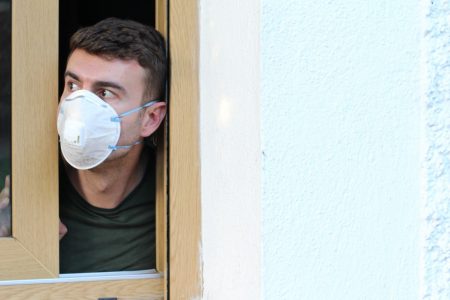Blessing or Curse? Staying social when you’re a socially anxious teen during Covid-19
Covid-19 presents a unique conundrum for socially anxious teenagers. To reduce anxiety symptoms, exposure to social situations is recommended; yet these situations have moved predominantly into the online sphere. Is this a blessing or a curse for these teens?
The Covid-19 pandemic and its associated societal measures of social distancing, working and studying at home, limits to whom you can see, and so forth, present a unique conundrum for teenagers who experience symptoms of social anxiety. These adolescents fear social situations because they are afraid of being negatively judged by others. They tend to endure social activities with distress, and are very likely to avoid many social situations. This has severely detrimental consequences, not least for their relationships with same-age peers. An effective way for these teens to reduce their feelings of social anxiety is to expose themselves to real-life (i.e. offline) social situations in which they may experience a reduction in anxiety and practise social skills, preferably with their all-important peers. But how can they ‘stay social’ during corona times?
A quick internet search brought up one website suggesting that socially anxious people ‘stay social’ by video conferencing and using social media. As a researcher dedicated to understanding and helping teenagers with social anxiety problems, I asked myself: What impact does the recent en masse move to an online world have on socially anxious teenagers? With social interactions predominantly taking place behind a screen, via Zoom, Microsoft Teams, or another medium, is this a blessing or a curse for these teens?
Online communication a blessing
On the one hand, we could imagine that the current quiet social life, reduction in social demands, not having to attend school (or at least for only half a normal school week, as in the Netherlands from 2nd June), and different sports and hobby clubs might benefit these teenagers. A recent Guardian opinion article discussed how for some people not having to deal with the overstimulation of life is a relief. Indeed, we could hypothesise that for teenagers who normally dread going to social events, parties, or sports activities because they are worried they will behave in a humiliating way and people will think they’re stupid, it might be a major relief to know that they don’t have to expose themselves to such situations and can stay in the comfort of their own home. In addition, it is possible that the ubiquity of online communication might provide a ‘safe haven’ for adolescents with social anxiety symptoms. Some research
shows that the online communication sphere is experienced as a safe environment, in which socially anxious teens can express themselves and interact with others without fear of immediate rejection. This would indeed provide them with an opportunity to stay social.
Online communication a curse
On the other hand, it is possible that the same social demands may be placed on them as in the real world, but that in this online world the demands might be greater due to the ambiguity of such communication. Research
shows that the lack of non-verbal cues in online communication via typical social media platforms (Instagram, Facebook, SnapChat) can create greater ambiguity than in offline situations. Ambiguous situations are related to negative interpretations in socially anxious teens, and these interpretations are associated with peer victimization. Even with video conferencing/calling, when other people’s faces can be seen on a computer screen, the ability to understand another person’s meaning through their non-verbal behaviour is perhaps more difficult and confusing: are they not looking at me because I’m boring, or is their internet not working, or are they distracted by someone else in the room? The fact that during online communication we are literally faced with our own image is likely to enhance the tendency to self-focus, a cognitive process that may interfere with successful social interactions. In short, staying social in the online domain is a daunting and challenging task, and one that socially anxious teens are likely to want to avoid.
Navigating a new, hybrid social world?
As social distancing measures are slowly lifted and people increasingly settle back into their familiar social lives, there could be a major rebound
effect for socially anxious teens. Even though this pandemic might provide a transient reduction in anxiety feelings, increased worry about socializing face-to-face could reach new heights if one’s social skills have become rusty as a result of a lack of practise in staying social, either offline or online.
There is much talk of how we will have to live with the ‘new normal’. What this means exactly is unclear. Will it be a hybrid of offline and online social communication? What might this mean for teens with social anxiety: might it help them slowly reintegrate into the real-life social sphere whilst supporting such interactions with online communication? Given the current rise in digital and online forms of therapeutic interventions for social anxiety and other mental health issues, this could indeed provide an opportunity. What is clear, however, is that researchers, teachers, therapists, and policy-makers worldwide should be alert to the risks these adolescents face and help them to navigate through this new, (post-)corona social society.





